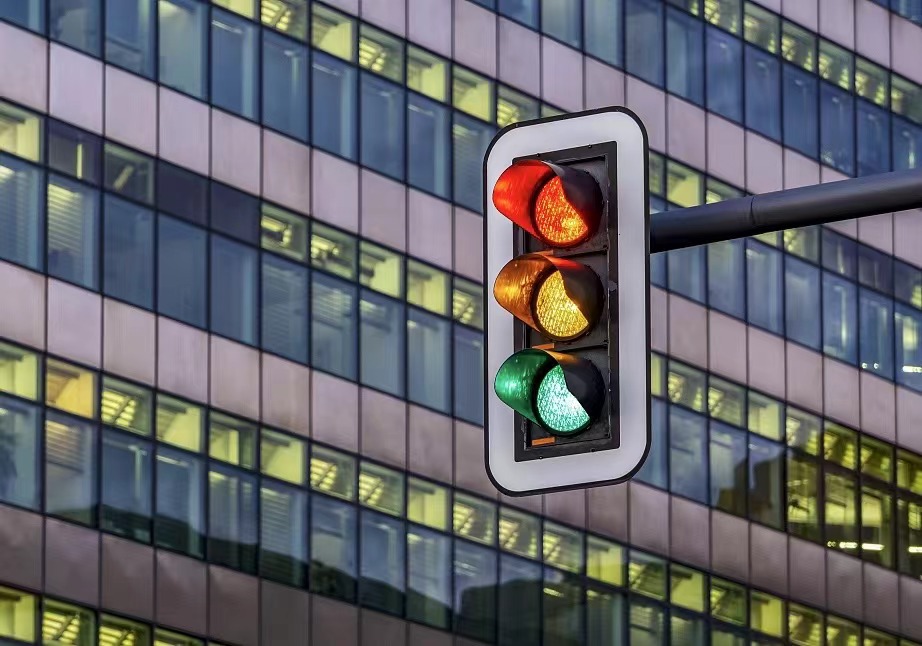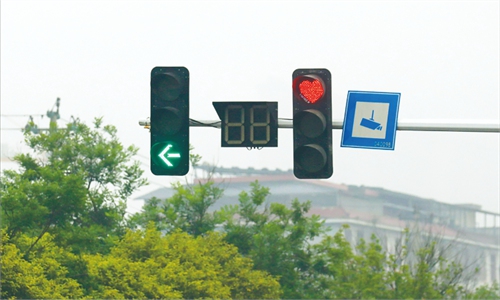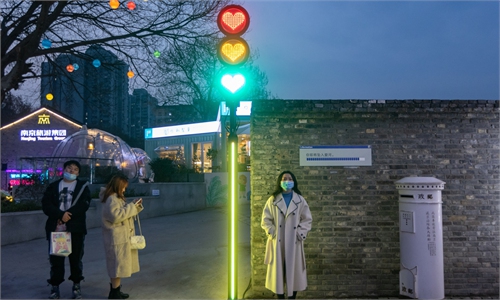Are ‘new’ traffic light rules too complicated? Chinese netizens find they may have misread the guidebook

Traffic lights Photo: VCG
No one could have thought that a traffic light system that has been adopted nationwide for five years could suddenly take over every hot search bar on China's social media platforms and spark a huge controversy overnight.
On Monday morning, a group of eight images depicting different scenarios formed by a total of nine traffic lights placed together triggered heated discussions among the public, with some criticizing the "new design" as being overly complicated and confusing. However, the institute responsible for the system, the Traffic Management Research Institute of the Ministry of Public Security, issued a statement late on Monday saying there was no new national standard for traffic lights to be implemented in 2022.
The Global Times has found out, the "new" traffic lights were actually rolled out in 2017, and have brought convenience rather than chaos to road traffic. Furthermore, such complex scenarios are only applicable in rare cases and would not affect normal road traffic.
The outcry began on Sunday, when "Sun Zhengliang," who claimed to be the designer of the latest national standard traffic lights, livestreamed the rules for the new lights but was forced to go offline 10 minutes later after being met with fierce criticism from viewers.
Late on Monday, the Traffic Management Research Institute of the Ministry of Public Security confirmed that someone had used the name and pictures of Sun Zhengliang, a staff member who works at the institute, to do a live broadcast. The statement also said that Sun had not opened any social media accounts or done any live broadcast.
According to media reports detailing the changes for the new version, regions across China will use unified signs that are more specific, involving a total of eight scenarios of different combinations of nine lights.
While some hailed the move for addressing traffic chaos and reducing the risk of pedestrians getting hit by right-turning vehicles, others expressed dissatisfaction over the new rules, slamming them as an unnecessary adjustment that is not only hard to learn and remember, but also posing greater dangers, as drivers and pedestrians would need more time to react.
When the Global Times contacted a number of local traffic management bureaus on Monday including Beijing, Southwest China's Sichuan Province and South China's Guangdong Province, they said they have not received any notification to replace the current traffic lights.
As it turned out, the "new" rules are in line with the guidebook titled Specifications for Road Traffic Signal Setting and Installation issued in December 2016, meaning that they were already adopted some five years ago.
In the guidebook, the combination of nine traffic lights is categorized under "special usage" rather than "common usage," specifying that such combinations would only be adopted under rare or extremely rare cases, while the current road signs are sufficient for day-to-day commuting.
Jiangning popo, a famous blogger and observer of social events on Sina Weibo with nearly 6 million fans, said such lights have already been used in Nanjing, East China's Jiangsu Province for a couple of years. The reason why many claimed they have not seen it could be because the lights did not bring any confusion and thus escaped people's attention.
"For large intersections, these types of lights are actually rather useful as they boost the efficiency of traffic flow," the blogger said.
Shanghai has also been applying the latest national standard on road signals in recent years, The Paper reported on Monday. As for the special nine-light combination, Shanghai has not applied this type, a person in charge at the Shanghai traffic police said, according to the report.
The "new" rules have also sparked controversy over the "removal" of the widely popular countdown for signal changes. However, the 2016 version of the guidebook did not mention whether or not the countdowns should be used, and it was up to various regions to use it to provide convenience for residents.
Sun Zhang, a mass transit expert and professor at Shanghai Tongji University, told the Global Times on Monday that the countdown should not be canceled but promoted nationwide. "It allows drivers and pedestrians to make a pre-judgment and take the initiative beforehand, which is beneficial to road safety and efficiency," he said.
Huang Ziting contributed to this story


